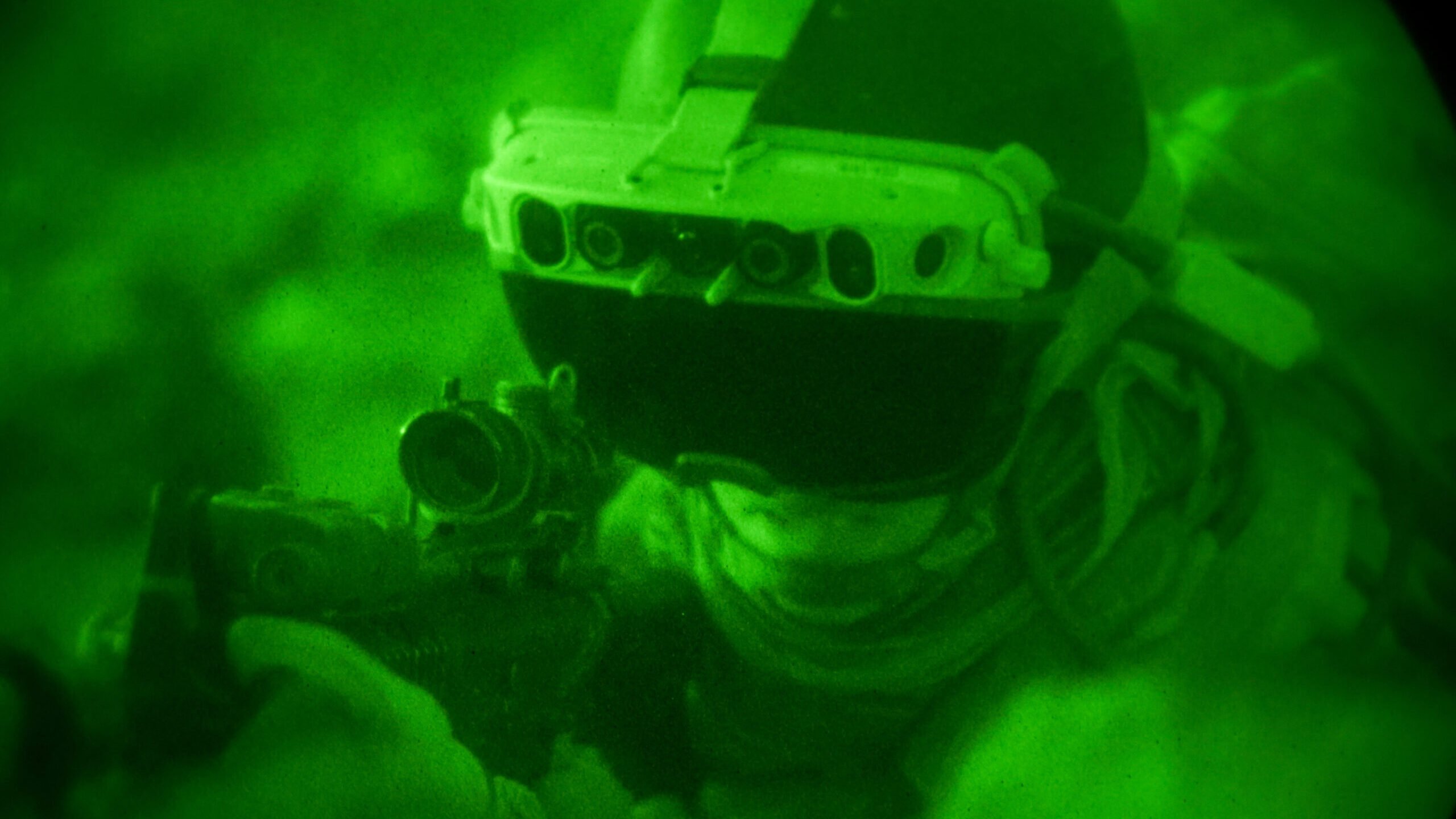
U.S. Soldiers, assigned to 11th Armored Cavalry Regiment, train with the Integrated Visual Augmentation System and the Enhanced Night Vision Goggles during Project Convergence 2022 (PC22) at Fort Irwin, Calif., Nov. 7, 2022. (U.S. Army photo by Sgt. Thiem Huynh)
WASHINGTON — Senior Army leaders want to strike the right balance between conducting expensive, large-scale exercises with new weapons, against smaller, more frequent events. Part of this calculus means the service will not be hosting Project Convergence this year and it has not yet decided when the event will return, according to a top general.
“We can’t wait 12 to 18 months to do a big, expensive exercise; We need to do that at the right point in time,” Army Futures Command (AFC) head Gen. James Rainey said at an Association of the US Army breakfast, providing an update on the fate of Project Convergence — a relatively new annual event designed to help the service test out new weapons, speed up the sensor-to-shooter lag time and merge joint capabilities as part of the Pentagon’s broader Joint All Domain Command and Control effort.
“I’ve got another 30 days before I owe the [Army] chief and secretary an answer on when I think we should do the next one, and the scope and scale of it,” he said.
The spring of 2024 is the earliest the event might occur since it takes the service about a year of preparation work, Rainey added. Defense News first reported that the Army will not hold a Project Convergence this year.
Under the Trump administration, the Army established the AFC, in part, to cut through red tape and rapidly draft requirements for new weapon programs centered around six main priorities: long-range precision fires, next-generation combat vehicle, future vertical lift, air and missile defense, the network and soldier lethality. By 2020, Army leaders wanted a way to test out and integrate some of those new capabilities alongside existing ones. Enter the inaugural Project Convergence at Yuma Proving Ground.
Over the following two years, the Army expanded the event, in part, by inviting its sister services to participate in 2021 and then a limited number of international partners in 2022. As such, the scope and size of exercise grew, presumably along with the price tag.
If and when the event returns, Rainey said Army leaders want to integrate in partners “to the extent possible” but acknowledged that there have been challenges opening the event up to foreign militaries due to security classifications.
While Army leaders huddle over Project Convergence plans, it is not the only such exercise the service is participating in and that could become a factor in the decision-making process. The joint force also hosted events like the recent Scarlet Dragon Oasis, which Rainey said he attended as part of the 18th Airborne Corps’ participation. That event, another JADC2-centric exercise, spanned multiple states and continents, and included the various US military services, US Central Command (CENTCOM) and the Office Secretary of Defense.
“The great exercises, the stuff we spend money and time on… is the best place to learn because that’s where our best commanders are,” he added.
CENTCOM played point on the live-fire exercise that ran from Jan. 23 to Feb. 3 and included a host of weapons like the Army’s High Mobility Artillery Rocket Systems (HIMARS), AH-64 Apache helicopters and Air Force B-52 bombers, to test out “evolving versions” of intelligence analytics tools designed to help accelerate the pace of war time decisions, CENTCOM’s Chief Technology Officer Schuyler Moore told Breaking Defense on Tuesday.
“The [Joint All-Domain Command and Control] JADC2 concept is what I would describe as the umbrella over everything that we’re doing,” Moore said. “These exercises and capabilities are allowing us to determine what the technology and tools are underneath that will enable that concept.”






















